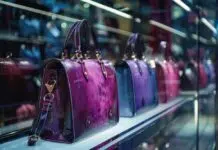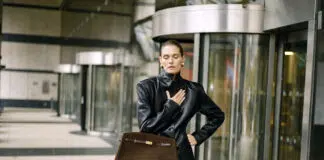An increasing number of restaurant owners are realizing the significance of their outside areas in response to the skyrocketing popularity of outdoor dining. A warm and inviting ambiance for meals is created in large part by the outdoor furniture. Several important tendencies are starting to surface, which mirror developments in sustainability, technology, and design. The way restaurants approach outdoor dining is being transformed by novel materials and cutting-edge technologies. Let’s have a look at these innovative innovations and how they might improve the look and utility of outdoor eating spaces.
Innovative Materials and Eco-Friendly Options in Outdoor Furniture
One of the most significant future trends in outdoor restaurant furniture is the use of sustainable and creative materials. Bamboo, recyclable plastics, and recovered wood are becoming popular materials. These materials not only lessen environmental effects but also provide endurance and distinct aesthetic attributes. Furniture built from these materials is weather-resistant and requires little upkeep, making it ideal for outdoor situations.
Innovative technologies are being introduced into these materials. Some furniture items now have built-in cooling or heating capabilities, which improves comfort regardless of the weather. Eco-friendly manufacturing procedures are increasingly gaining popularity, with techniques aimed at reducing energy use and waste.
Biodegradable materials are another promising prospect. These materials disintegrate naturally over time, further lowering their environmental impact. Energy-efficient industrial technologies are also becoming more popular, requiring less energy during the manufacturing process. Environmentally certified furniture, such as those from established green certification schemes, is becoming increasingly popular among eco-conscious buyers. In addition, upcycling trends are reviving old materials through inventive designs that give recycled products a new and trendy appearance.
Modern Design Aesthetics and Color Trends
Modern design aesthetics are at the forefront of upcoming outdoor furniture trends. Minimalist designs with clean lines and utilitarian shapes are popular, indicating a simplified and uncluttered attitude. Bold color palettes are also making a statement, with brilliant hues and eye-catching colors that add energy to outdoor settings.
Textures and finishes are quite important in current design. The combination of matte and glossy surfaces can produce a visually appealing contrast that improves the overall appearance of the furniture. Many designs are now easily integrated into their surroundings, ensuring that furniture complements rather than overpowers natural landscapes.
Geometric patterns are being used to give visual interest and a modern feel. Metallic elements such as gold, silver, and bronze are also used to provide a sense of wealth and sophistication. Vintage and retro inspirations are making a comeback, with old design aspects being restored and modified for a new perspective. Customizable color options are also available, allowing restaurants to tailor furniture to their unique color schemes and branding.
Modular and Adaptable Furniture Designs
Modular and adaptable furniture designs are gaining popularity in outdoor restaurant situations. Flexible layouts that can be readily modified are suitable for handling varying group sizes and changing requirements. Multi-functional objects that serve many purposes are increasingly gaining popularity, providing convenience and adaptability.
Space efficiency is an important factor, with designs that optimize seating capacity while decreasing footprint. Customizable options enable restaurant owners to tailor furniture layouts to their unique requirements. Quick assembly and disassembly features make it quicker to set up and disassemble furniture, which is especially handy during seasonal changes or special occasions.
Stackable designs provide space-saving storage solutions, while extendable arrangements allow furniture to grow or shrink as needed. Interchangeable pieces provide an additional degree of customization, allowing restaurant owners to exchange or replace components to renew the look or adapt to changing needs.
Technology Integration in Outdoor Seating
Technology is becoming increasingly important in outdoor furniture design. Charging stations with built-in USB connections and wireless charging mats are becoming increasingly popular, making it easier for guests to charge their devices. Smart furniture with integrated lighting and heating controls improves both comfort and functionality. Giving your outdoor space some additional lighting elements can also improve the overall experience.
Interactive features, such as touchscreens for ordering or accessing information, enhance the customer experience. Connectivity with mobile apps facilitates reservation and ordering, optimizing the eating experience. Bluetooth speakers embedded into the furniture provide entertainment alternatives, which enhance the whole experience.
Environmental sensors monitor weather conditions and modify furniture settings accordingly, ensuring comfort in a variety of climates. Automatic adjustments enable furniture to react to user preferences or environmental changes, resulting in a more personalized experience. Voice control integration with voice-activated assistants adds another level of convenience and accessibility.
Ergonomics and Comfort Advancements
Outdoor furniture designers prioritize comfort, and various innovations have been made to improve the seating experience. Supportive seating with ergonomic features allows diners to stay comfortable for extended periods of time. Adjustable features, such as reclining elements, enable personalized comfort and relaxation.
High-quality cushions constructed of weather-resistant and soft fabrics help to provide a comfortable seating experience. Improved accessibility features ensure that all users, including those with disabilities, can easily utilize the furniture. Temperature control alternatives, such as cushions with built-in regulation, aid in comfort under changing weather situations.
Anti-slip elements are intended to minimize slipping and improve stability, resulting in safety and peace of mind. Lumbar support in ergonomic designs improves lower back health, while breathable fabrics promote airflow, decreasing heat buildup and boosting overall comfort.
Final Thoughts: Embracing the Future of Outdoor Restaurant Furniture
As we look ahead, outdoor restaurant furniture trends represent a dynamic combination of innovation, design, and sustainability. The use of sustainable and innovative materials addresses environmental issues while also improving durability and style. Modern design aesthetics and bright color trends add a fresh and vibrant appeal to outdoor spaces, while modular and adaptable furniture designs provide flexibility and functionality.
Technology integration is revolutionizing outdoor sitting by bringing convenience and interactive capabilities to enhance the dining experience. Ergonomic and comfort improvements ensure that outdoor furniture is not only fashionable but also supportive and pleasant.
Staying ahead of these trends can benefit restaurant owners by increasing customer satisfaction and creating a more pleasant outdoor dining atmosphere. When considering replacing your outdoor furniture, keep these trends in mind to create a setting that is both functional and visually appealing. Embrace the future of outdoor furniture by investing in pieces that improve both the ambiance and the dining experience.





